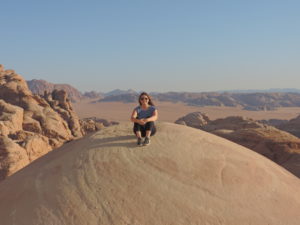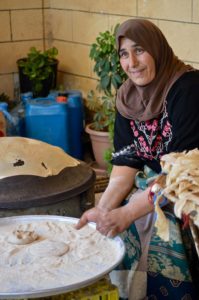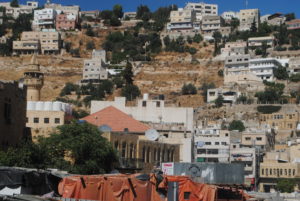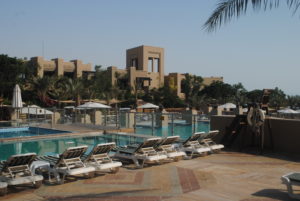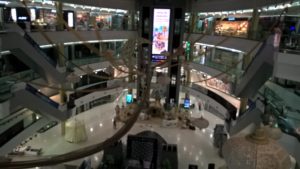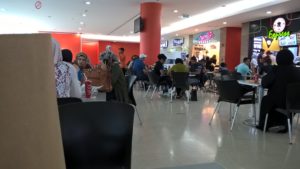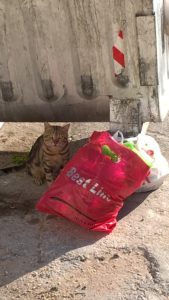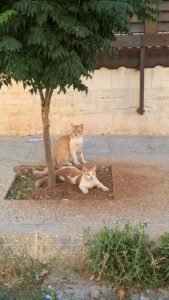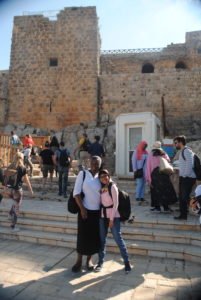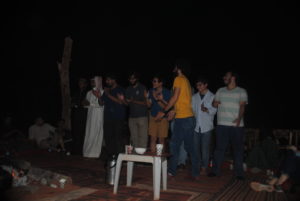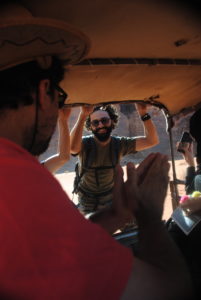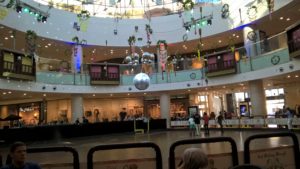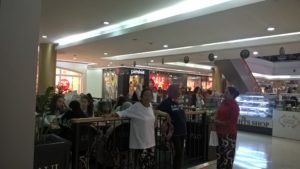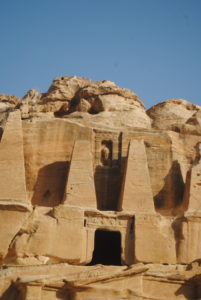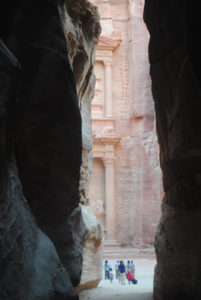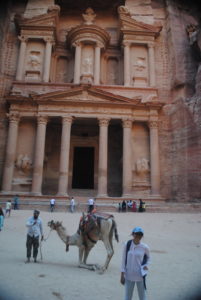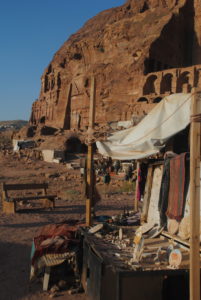Ahlan!!
After much anticipation we finally arrived at Wadi Rum! As we stepped out of the bus we climbed into 4×4 pick-up trucks we were met with vast expanses of rock and sand. As we drove into the desert to Rainbow Camp, our Bedouin host for the night, we were enveloped in a sea of dust and towering rock formations. As soon as we left the initial village of Wadi Rum I was surprised as to how desolate and pure the desert was. It was incredibly peaceful and unlike anything I had ever experienced before. As our Bedouin host drove us to our camp, I acutely realized that it would be very easy to get lost in the expanse of this desert. Once we arrived at our camp our hosts began to sing traditional songs and play an instrument similar to a guitar. As we clapped to the beat of the songs the men started lining up in front of us and dancing! After this they were ready to serve us dinner and show us how they prepared our food. They cooked the most succulent chicken and potatoes for us in this underground oven where they place the meat on metal plates that are connected and lowered down into a circular oven that is dug into the earth. As they pulled out the metal trays to let us see the oven it was incredibly long and narrow! Later on in the night, at about 2:30 AM, we hiked to a rock beside our camp to stargaze. The sky was full of stars. I could see the soft twinkling stars and older bright stars, the sky looked like a maze, a sea of variations of light. As I laid on this rock, trying not to fall asleep, I began to see white lights streaming across the sky. I realized that I was watching shooting stars! Never before have I seen that many shooting stars. If you weren’t watching closely enough you could easily miss them for the fall only lasted for about five seconds.

The following morning we left for four hours of 4×4 tours of the desert. Since we had arrived at night the previous day, I recall seeing the desert for the first time and being in awe. The sand was this incredible rust, blood-orange color! We first drove to a spring in the mountains where we hiked up an enormous taupe colored rock to a small plateau with vegetation to reach a spring, hidden like a treasure inside a cave with a narrow entrance, so slight you could almost bypass it. As we continued on our tour we came to another canyon that was recessed. The canyon had inscriptions from the Nabateans, an old tribe that lived in the south of Jordan, at its entrance. There were three tribesmen carved into the top of the rock, higher than was seemingly feasible. As I walked on the ridges of the rock to reach the end of the canyon, I was surrounded by multicolored rock that reminded me of the Siq trail. At the entrance the rock was a rust-orange with lighter sand colored striations, however the color of the interior of the canyon was completely different. The rock was shades of burgundy, chocolate, sand and rust with golden hues. It was beautiful. All along the canyon walls were Arabic words and images.The rock was cool opposed to the hot dusty breeze of the desert. It was a beautiful place to camp out and listen to Arabic music.
Later we arrived at another camp for another Bedouin meal. Since the heat was at its pinnacle, we rested for two hours before going back out for four more hours of touring. We continued on hiking mountains and sand dunes to a clearing where we could see the mountains that separated Jordan from Saudi Arabia! As we toured we lost track of time. Driving around the desert in the back of a 4×4 made time seem irrelevant and illogical.
The most memorable part of the afternoon tours was watching the sunset on the mountains. At the end of the day we climbed to the middle of a large rock formation and directly in front of us was the sun, descending upon the mountain. The as the sun set the sky turned colors of deep purple, soft pink and vibrant orange with tints of golden yellow. It changed the color of the rock, which went from a blanched rust-sand color to a saturated pink-orange. It was one of the most beautiful sunsets I had ever seen. It was a perfect end to the weekend full of desert tours.

